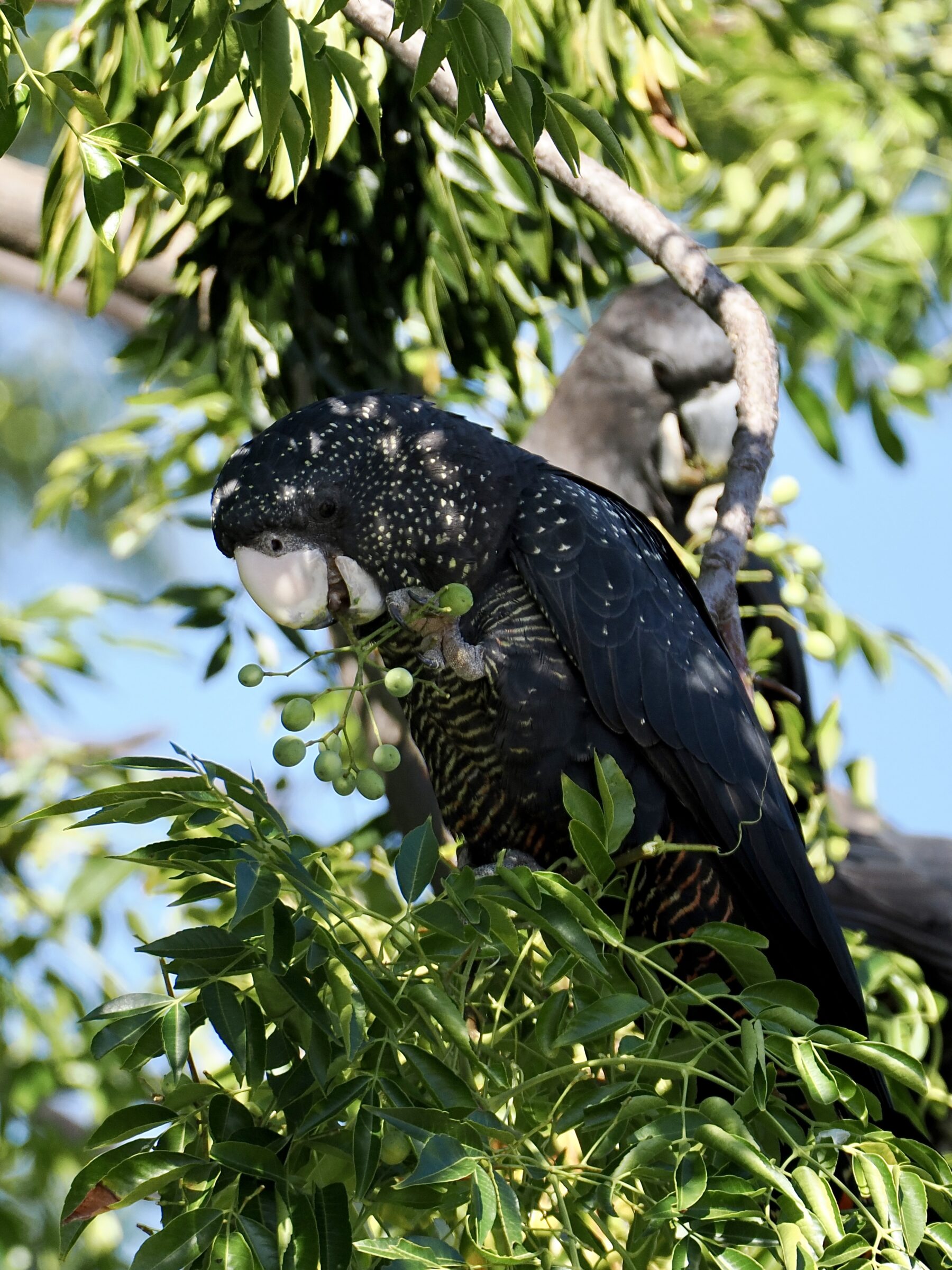In front, above, is a female red-tail.
Behind her is a male.
At the relevant time and place – 11.11 am on 01 May, in a so-called Cape Lilac tree, growing in a West Leederville lane – they were two of five red-tails, enthusiastically feasting on the same tree.
Debris was “raining” down, temporarily “greening” the asphalt.
One oft-evident aspect of same-species’ bird behaviour was conspicuously absent…as is very often the case with all three of southwestern Western Australia’s black cockatoos.
(equally magnificent, and also endangered, the other two are “our” planet’s only white-tailed black cockatoos)
If you pay even the most cursory attention to birds of the “same feather”, you can hardly fail to notice that they spend a lot of their time “sorting out” their “pecking order” – fighting with and/or trying to intimidate each other, “stealing” from each other, attacking a “rival” or “intruder”.
Absolutely none of this sort of behaviour was exhibited by any of the red-tails we watched that morning.
The same has been true of countless other close encounters we have had with WA’s very sociable black cockatoos.
On almost every occasion, “a whole lot goes on” – rarely does more than 30 seconds pass without some very audible communication.
However, almost always, rivalry, aggro and biffo are simply not evident.
